I should be clear that I was not expecting a very good meal. There was the fatigue, for one. I was clutching a clipboard outside a private meeting room on the seventeenth floor of the Waldorf Astoria, checking off names as I made eye contact with guests walking out of the elevator. There were also last-minute questions, like if I could possibly change their departing flight or arrange for a driver. After giving catering a nod to begin pouring wine and passing hors d’oeuvres, my colleague and I started gathering our files and extra pens, and only barely began pondering what we might eat for dinner.
I’d been in New York for almost a week, and the hours felt endless—staying up late, stuffing name tags into plastic holders, arranging brochures, meeting with florists. If you had asked me what day it was, I may not have been able to tell you. The next day, 300 people were set to arrive from as far away as Senegal and France, for a conference focusing on the world’s most pressing humanitarian issues. This was my fourth year, so I knew the routine. Staff lunches were quick affairs—soups and sandwiches a runner picks up from the closest fast-casual restaurant. Dinners were modest, sometimes in the hotel, or within a few blocks.
With the exception of a wedding I once attended in Napa, most catered meals I’ve encountered have been forgettable, which is why my hopes were not high when the head waiter noticed us tidying up our things and asked if we wanted to eat. He said they could open the space next door and bring out a meal, and since we didn’t have the energy for anything else, we agreed.
We walked through a mahogany door that led to a smaller room where coats hung on a rack along one wall, and a small round table set for two was tucked into the opposite corner. We sat down, thankful for a moment to rest. Muffled voices rose from the other side of the wall as toasts were made and the salads were plated. A few minutes later, our own salad course was served.
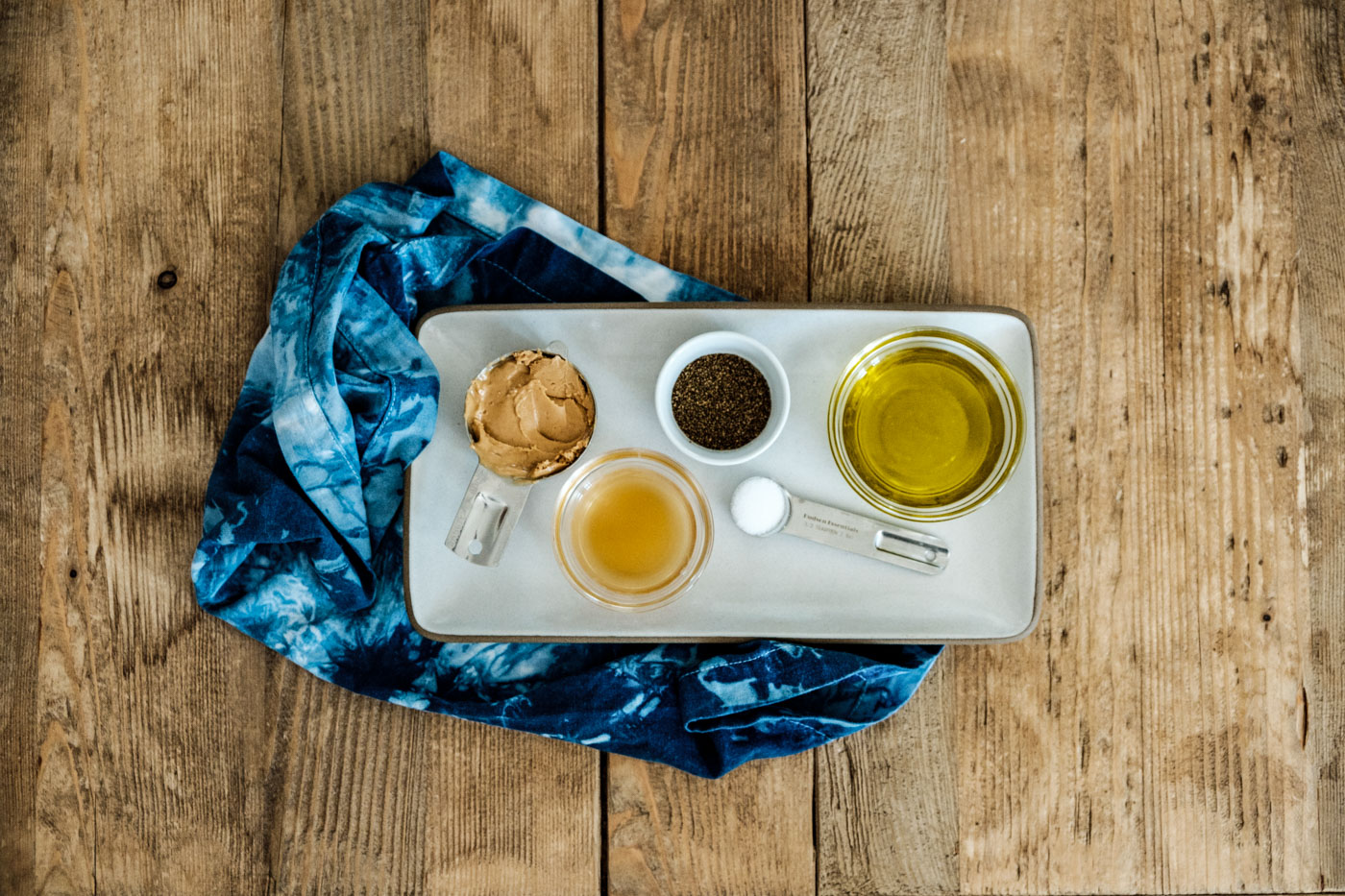
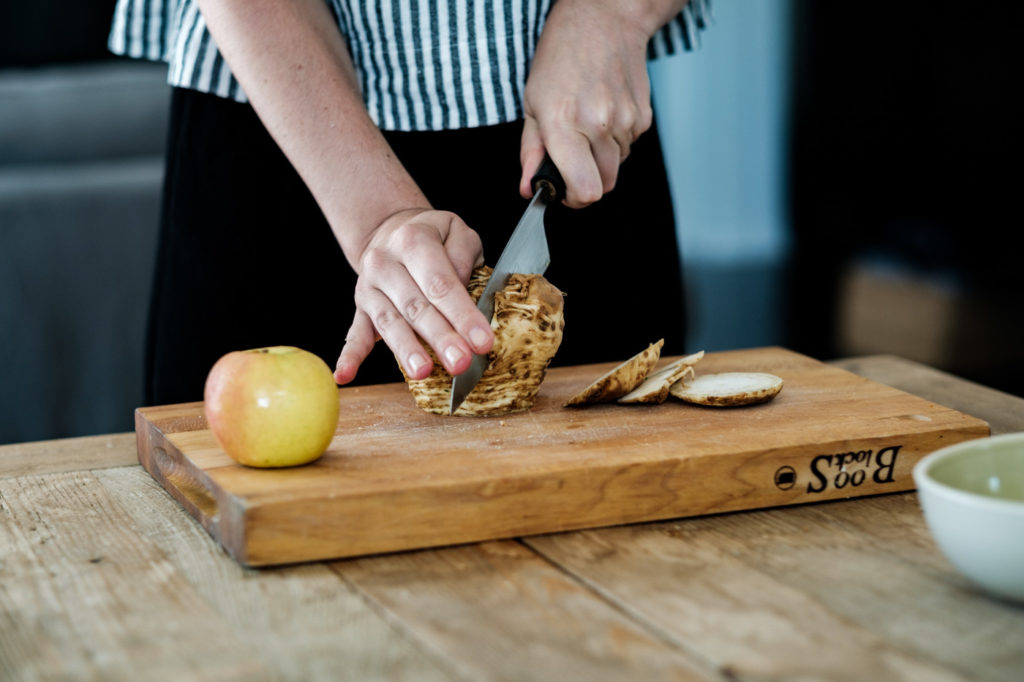
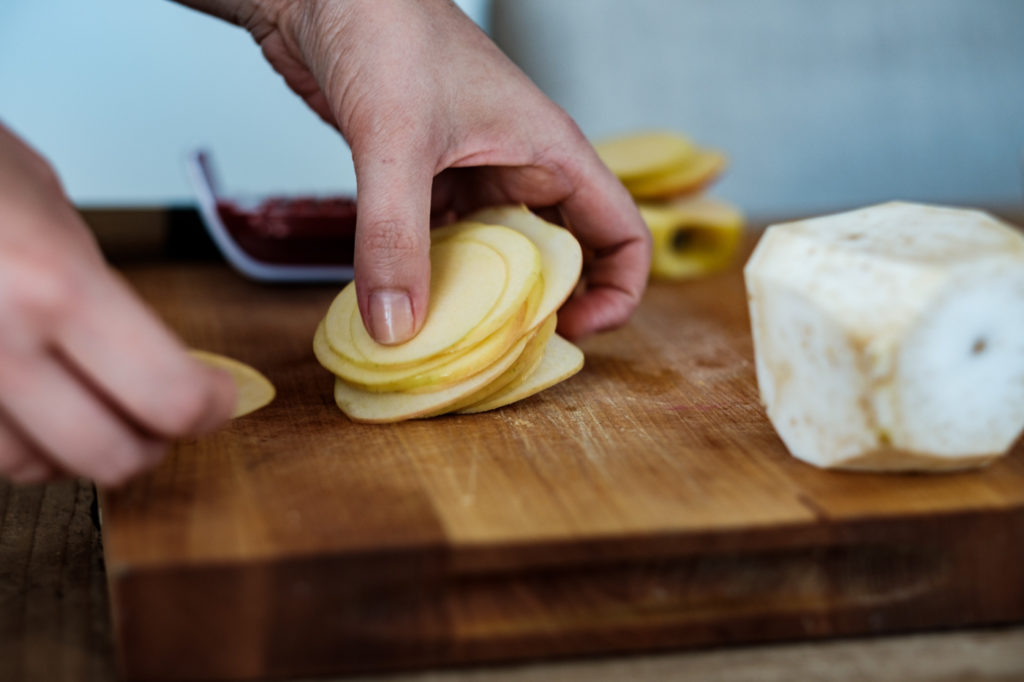
Months earlier, I had chosen the menu myself. A helpful woman from the catering department sent me a file with the elaborate choices, and I sat with my boss in her office one afternoon, offering my recommendations marked with a yellow highlighter. Her only requirement: New Zealand Sauvignon Blanc. The rest we settled on relatively easily; we agreed on the Waldorf Salad to start since both the hotel and the salad were classics.
The Waldorf Astoria opened in 1893, and the now illustrious Waldorf Salad was first served later that same year at a charity ball in honor of St. Mary’s Hospital for Children. The original recipe was a crunchy combination of diced apples and celery tossed with mayonnaise.
The chilled plate set down in front of me looked nothing like the original salad in my imagination. The dressing was light and refreshing, and there was a certain flavor I kept circling around, which I learned was celery root. Sweet walnuts crunched against my teeth, and after a few bites I was so enthusiastic that the server arranged for Executive Sous Chef Peter Betz to come say hello. He told me all about the ingredients—like walnut oil and crème fraîche—and even sent me home with a signed copy of The Waldorf-Astoria Cookbook.
Naturally, I’ve tinkered with the recipe, creating a dressing with a nutty base thanks to cashew butter. Celery seeds amplify the grassy flavor and play against the celery root and apple in what is more reminiscent of a slaw. It’s crisp from the apples, sweet from the grapes, and more filling with fluffy quinoa scattered throughout.
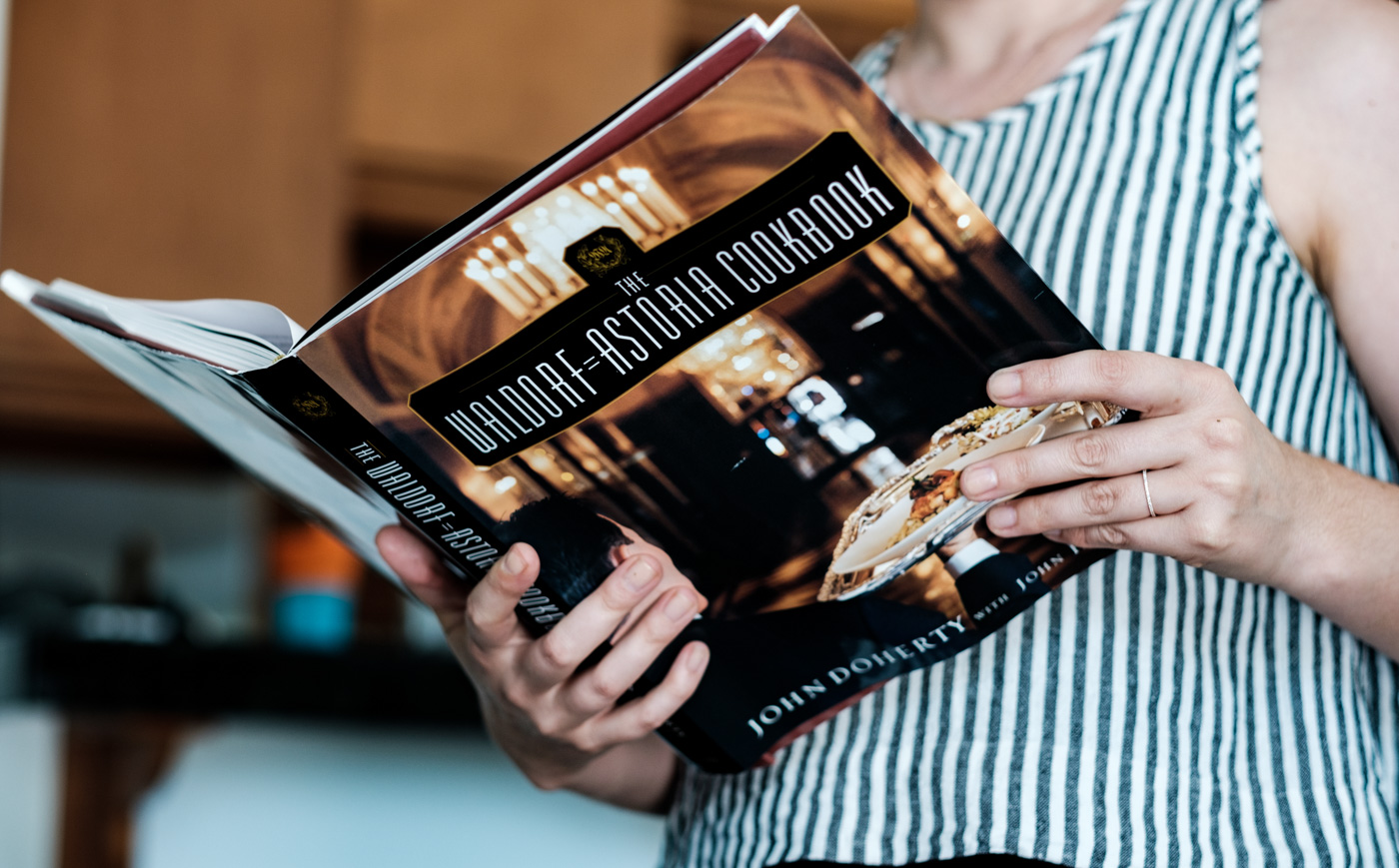
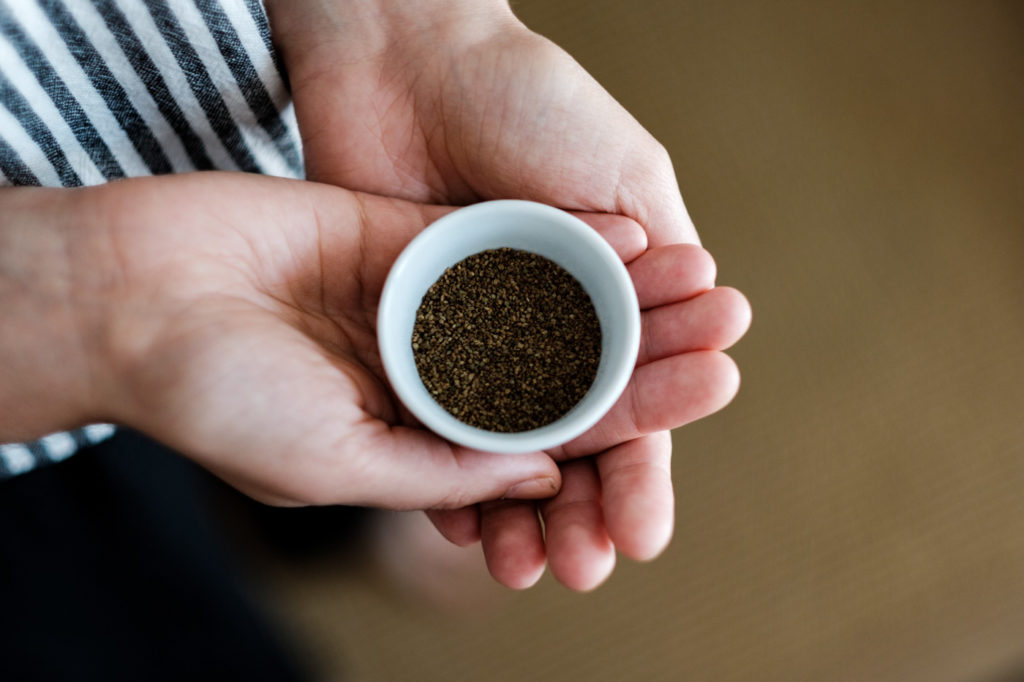
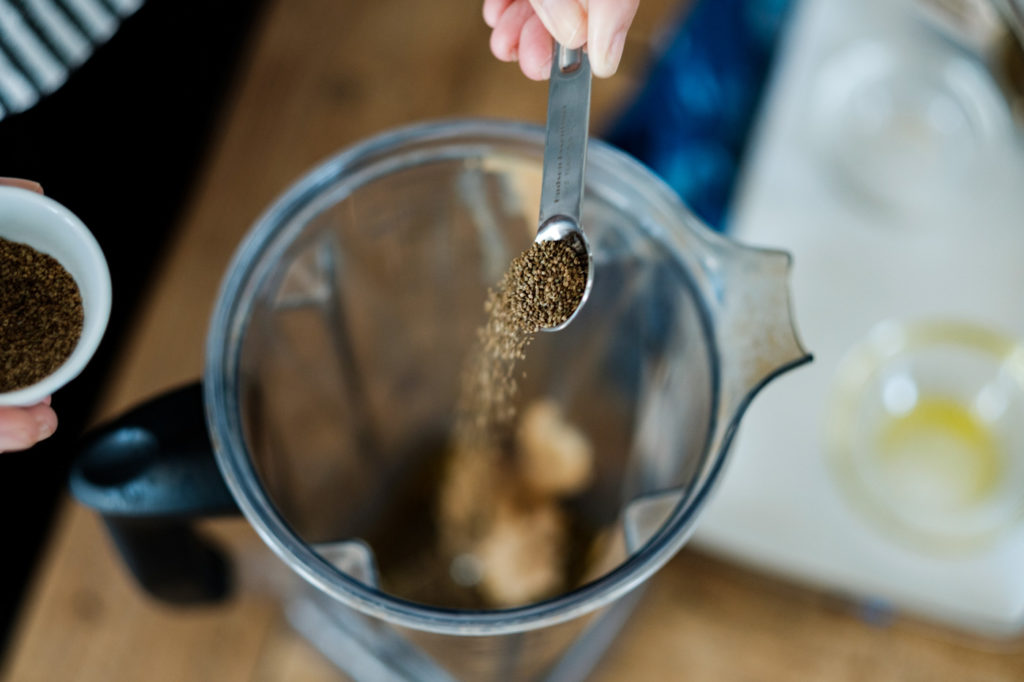
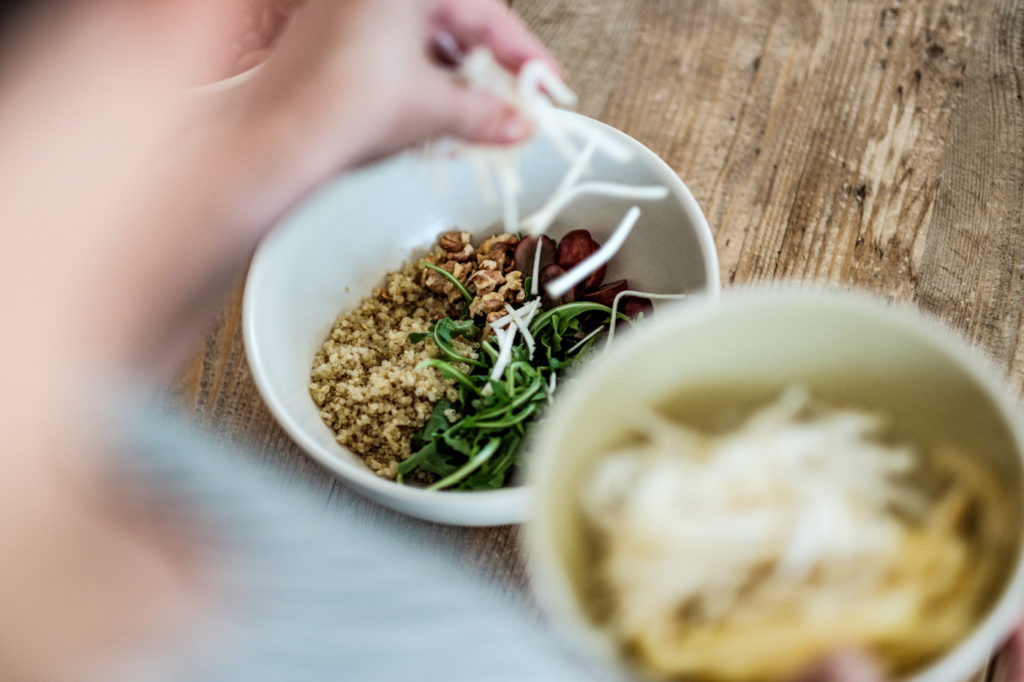
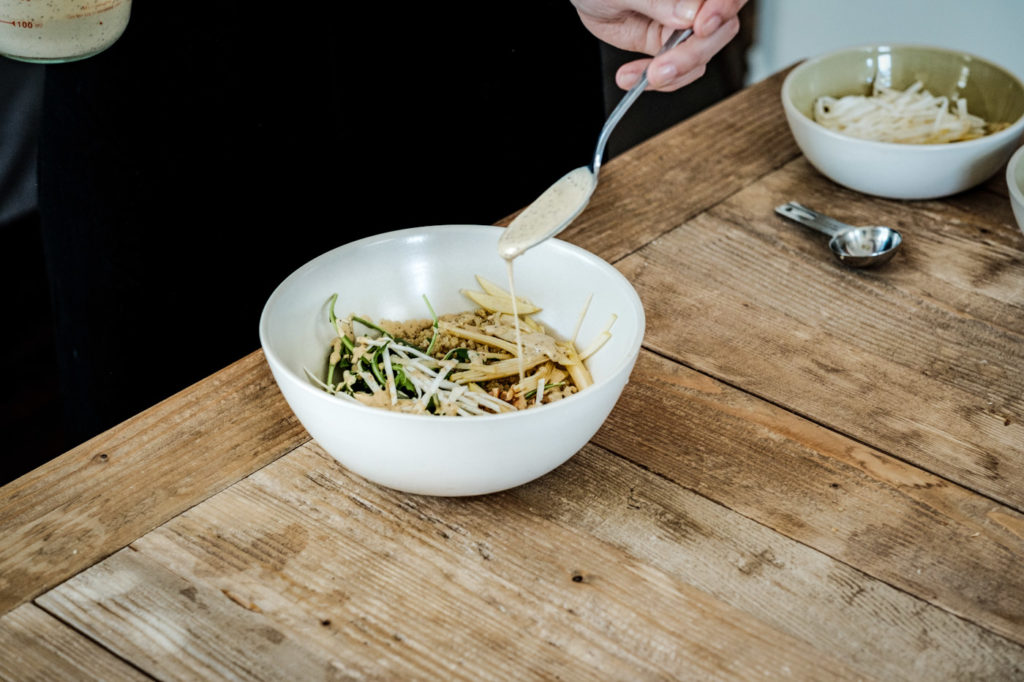
Since my time at the Waldorf, much has changed. The hotel closed for renovations earlier this year, and my former boss—the one I heard laughing in the next room, no doubt a glass of white wine in hand—passed away suddenly in 2016. Now a brief night of my life is tangled in a bowl of creamy dressing with peppery arugula and crunchy fruits and vegetables sliced on a mandoline, and a story about salad has become more than a story about only salad.
When I unearthed the nearly 300-page cookbook from a box in the back of my closet, I was transported back to one October evening when my feet hurt and my eyes drooped, and I wanted to walk away and say no, please don’t go to any trouble. But we said yes, reluctantly, and within a few minutes my spirits were lifted and I made a memory, one I can eat, one I can swallow again and again. Isn’t that the very best kind?


RECIPE
Crunchy Waldorf Slaw
In The Waldorf-Astoria Cookbook, Executive Chef John Doherty writes that the iconic salad is the “single most frequently requested recipe from people around the world.” The recipe has been revamped many times over the years—from a mayonnaise-based dressing to a mix of yogurt and crème fraîche, to an emulsified mix of champagne vinegar, egg yolk and white truffle oil. The cookbook’s recipe calls for black winter truffles, indulgent and not widely available, so I’ve taken a few liberties and created an inspired version of the salad I can easily recreate in my home kitchen.
Serves: 2 as a main course, or 2 to 3 as a side.
For the dressing
- ¼ cup cashew butter
- ¼ cup extra-virgin olive oil
- ¼ cup filtered water
- 2 tablespoons apple cider vinegar
- 1 ½ teaspoons celery seed
- ½ teaspoon salt
- ½ teaspoon honey
- Freshly cracked pepper
For the salad
- 1 cup walnuts
- 1 small celery root, peeled
- 1 small apple, cored
- ½ cup red grapes, halved
- 1 cup cooked quinoa
- 2 cups lightly packed arugula
- 1 avocado, pitted and sliced
- Freshly cracked pepper
Directions
Preheat oven to 350°F. While the oven preheats, make the dressing by adding all ingredients into a blender. Process on medium speed until well combined. Taste and adjust seasoning, if needed.
Spread walnuts on a small sheet pan and toast for 10 minutes, or until fragrant and golden. Once cool, roughly chop.
To make the salad, slice the celery root and apple on a mandoline, then cut into matchstick-size strips; transfer to a large mixing bowl. To the same bowl, add the grapes, quinoa, arugula and walnuts. Drizzle with dressing and begin tossing, adding more as needed, until ingredients are well-coated. Garnish with slices of avocado, if desired, and a few grinds of freshly cracked pepper.
Nicole Gulotta is Life & Thyme’s resident recipe developer and pens the ongoing column, The Spice Chronicles, in which she explores her spice cabinet for easy-to-make recipes for the home cook.





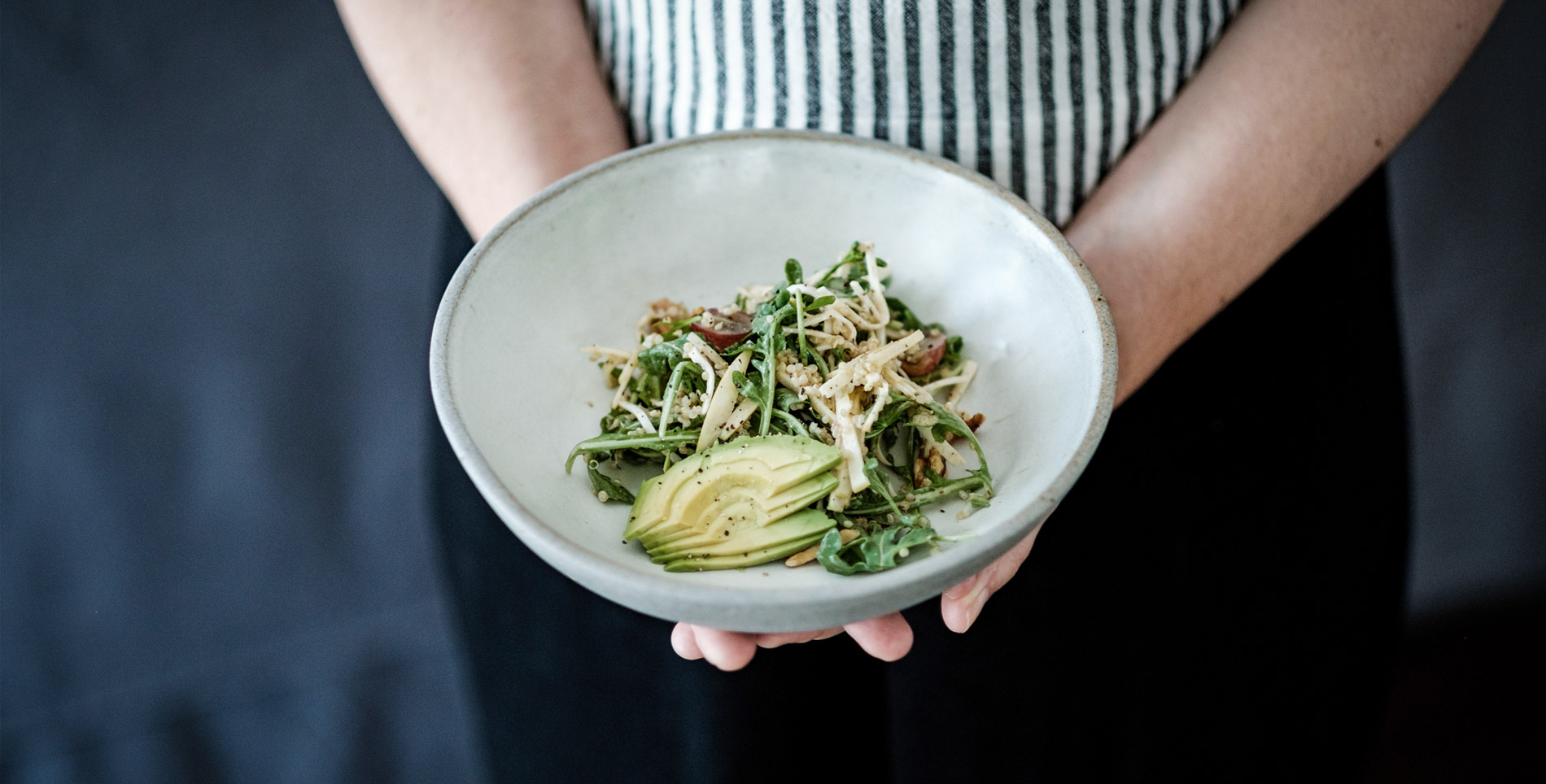

Our comments section is for members only.
Join today to gain exclusive access.